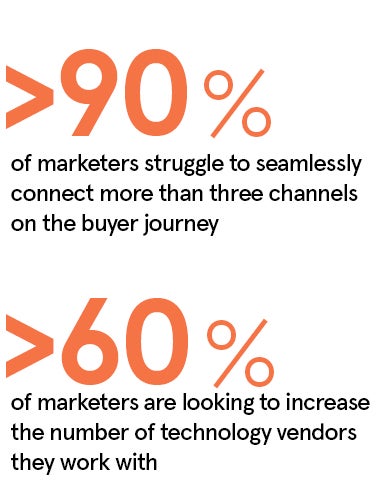Consumers have become accustomed to using multiple devices during their buying journey and expect to be treated as a recognised individual on each service they use.
They benefit from the continuing transition to multi-channel marketing, as consumers are able to receive personalised content and advertising that truly fits their interests. But businesses also stand to gain from this shift.
“We view omnichannel as a huge opportunity for brands because the more they learn about how consumers are behaving in different contexts, the smarter the brand can get in improving everything being messaged, whether this is offers, customised campaigns or content,” says Richard Foster, UK managing director at LiveRamp, a leading provider of identity resolution and data onboarding.
Countless major corporations have understood that omnichannel approaches can be used to improve the customer experience. For example, users of Amazon Kindle can read an eBook on their laptop and later in the week open the Kindle app on their mobile, with Amazon’s Whispersync capability knowing that the user finished page 170 on one device, so when they access on other devices, the system remembers and the book starts at page 171.
“It’s just seamless. It’s friction-free enjoyment of content thanks to the business knowing that those two devices belong to the same person,” adds Mr Foster.
Companies without the right tools and solutions will find themselves unable to tailor their marketing meaningfully to consumers on an individual basis. LiveRamp offers an identity resolution solution that is able to bring together a range of different identifiers across multiple devices and in the process create an omnichannel view of customers.
There is clearly a challenge for businesses when audiences are interacting with them in lots of different ways, both offline and online, as hundreds of different identifiers can be created.
 If a person accesses a retailers’ website on their phone and laptop, and they are not logged in, they are likely to receive a cookie or mobile ID on their devices, which will each be treated as a profile. “It could be as extreme as one profile being defined as a prospect profile and the other defined as a customer, which will provide very mixed messaging to users,” says Mr Foster.
If a person accesses a retailers’ website on their phone and laptop, and they are not logged in, they are likely to receive a cookie or mobile ID on their devices, which will each be treated as a profile. “It could be as extreme as one profile being defined as a prospect profile and the other defined as a customer, which will provide very mixed messaging to users,” says Mr Foster.
WW, formerly known as Weight Watchers, found that a large share of the web traffic from their paid search and social media advertising was from current subscribers to their service, due to their use of cookie-based advertising, which meant WW were paying to target existing customers.
By partnering with LiveRamp, WW has been able to perform smarter targeting and suppression campaigns by using improved customer relationship management data, resulting in a 30 per cent higher conversion rate on display campaigns and a 50 per cent lower cost per acquisition for lapsed customers.
“We’re helping our clients become more sophisticated, which can mean they spend less to achieve the same results, because money is not being wasted targeting existing customers in prospect campaigns. It may also improve customer experience, because you’re not continually sending advertising to them about a product they’ve already purchased,” says Mr Foster.
When companies are able to join up their understanding of consumers, they can build on their body of knowledge about that customer, irrespective of the devices they’re accessing from, and present them with a better experience. For example, an omnichannel view would enable enterprises to determine if a customer saw an item online first and then went offline to the store to buy the product.
By tying together these two customer experiences, companies can clearly identify the entire journey a customer makes and send them the most appropriate messaging.
“It gets us closer to the utopian ideal of providing the right message at the right time to the right user. It enables a truly omnichannel view of the customer that hasn’t been possible before,” Mr Foster concludes.
For more information please visit www.liveramp.uk

